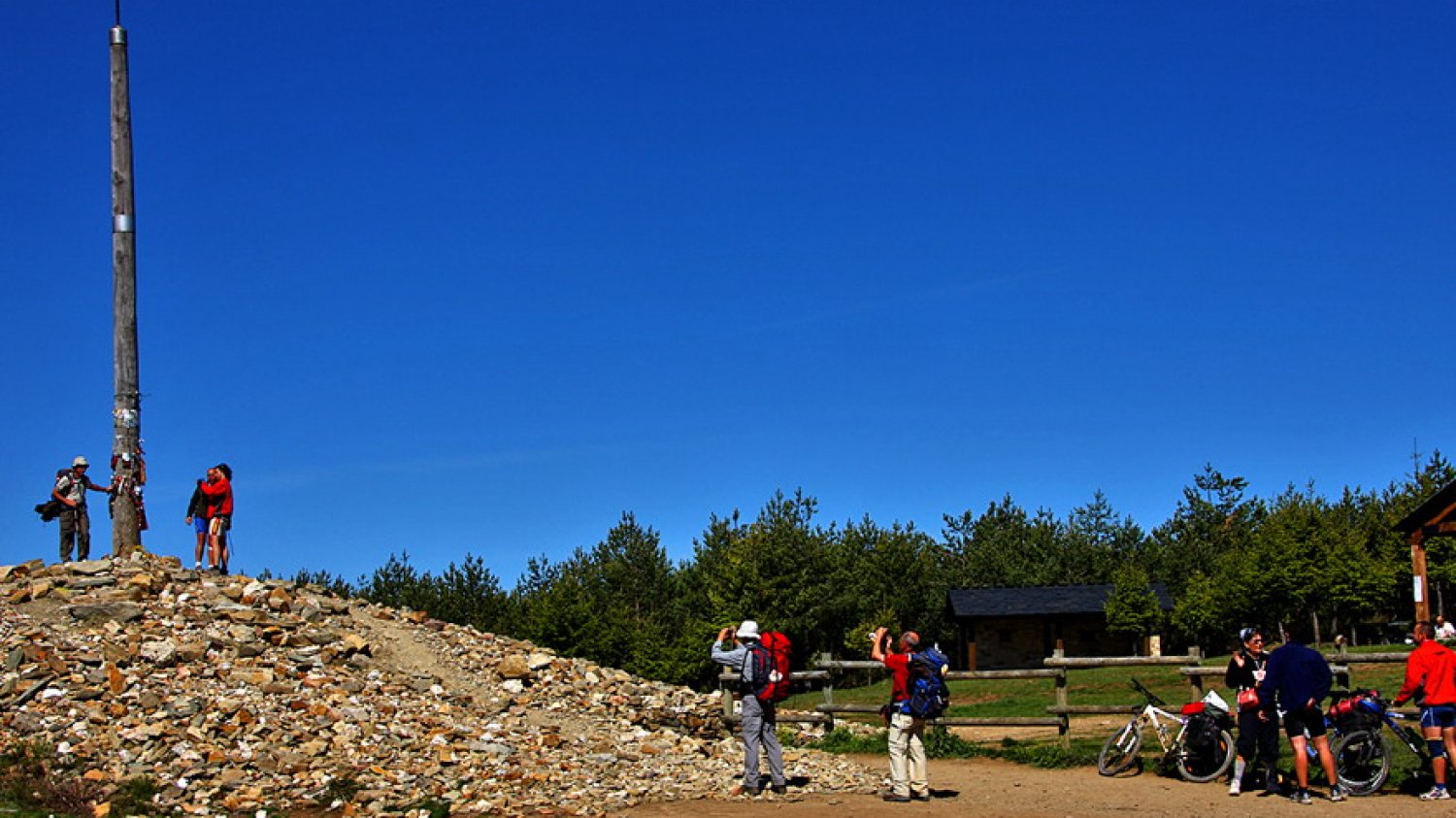
Create your own journey; Experience the best of Northern Spain at your own pace
This website uses its own and third-party cookies, for the proper functioning of the site and to generate usage statistics.
By continuing to browse we understand that you consent to our �ookie policy

2023-11-22
The Camino de Santiago, a network of pilgrimage routes converging at the Cathedral of Santiago de Compostela in Spain, is not only a physical journey but also a spiritual and cultural one. Over the centuries, numerous rituals and customs associated with the Camino have developed, each with its unique and profound significance. These rituals and customs, such as leaving a stone at the Cruz de Ferro, are an integral part of the pilgrim's experience and reflect the rich history and spirituality of the Camino de Santiago.
1. Holy Year (Año Jacobeo)
The "Año Jacobeo", also known as "Año Santo", is celebrated on the Camino de Santiago when the feast day of Saint James (July 25th) falls on a Sunday. This event, which occurs approximately every 6 to 11 years, is a special time of pilgrimage marked by the opening "Puerta Santa en la Catedral de Santiago" (Holy Door at the Cathedral of Santiago). Pilgrims visiting during a Holy Year can obtain plenary indulgence, symbolizing the forgiveness of their sins, making this year a spiritually significant and religious occasion.
2. The Compostela: Certificate of Completion
Upon reaching Santiago de Compostela, pilgrims can obtain the "Compostela," a certificate attesting to the completion of the Camino. To qualify, they must have walked at least 100 km or cycled 200 km. This document serves not only as a tangible memento of the journey but also as a symbol of achievement and perseverance.
3. Pilgrim's Mass and Botafumeiro
At the Cathedral of Santiago de Compostela, the Pilgrim's Mass is celebrated daily. During this Mass, on some occasions, you can witness the spectacular swinging of the Botafumeiro, a large censer that swings along the nave of the cathedral. The Botafumeiro is not only a visual spectacle but also symbolizes the purification and elevation of the prayers of the pilgrims to the heavens. Check here for the exact days when you can see the Botafumeiro.
4. The Embrace of Saint James
Once in the cathedral, pilgrims often embrace the statue of Saint James. This gesture represents gratitude, respect, and the end of a long journey, and it is a moment of great emotion and spiritual reflection.
5. The Cruz de Ferro: An Act of Release and Reflection
The Cruz de Ferro, a simple iron cross on a wooden post, is found on the French route of the Camino de Santiago. According to tradition, pilgrims bring a stone from their place of origin and leave it at the foot of the cross. This act symbolizes the release of emotional and spiritual burdens. When leaving the stone, pilgrims often reflect on their lives, hopes, and challenges, turning this ritual into a moment of deep introspection and liberation.
6. The Water of Purity (Purification Ritual)
In some parts of the Camino de Santiago, there is a purification ritual where pilgrims could symbolically cleanse their sins and burdens in a sacred spring or river. Pilgrims can pour the water over themselves or immerse themselves in it while contemplating forgiveness and renewal. This purification ritual symbolizes leaving the past behind and embracing a fresh start on their spiritual journey. It is a moment of reflection and cleansing deeply rooted in Camino tradition.

7. Messages on the Way
Along the route, it is common to see piles of stones left by pilgrims. These stones, often marked with messages or symbols, represent wishes, prayers, or memories of loved ones.
8. Walking a Stage in Silence
Some groups of pilgrims choose to dedicate an entire stage of the Camino to silence. This act is an exercise in inner reflection and spiritual connection, offering a contrast to the social nature of other parts of the Camino.
9. The Fountain of Health (Estella)
This contemporary ritual, courtesy of Bodegas Irache, offers a unique gem: the Fountain of Health. Located in a charming square in front of the winery, this innovative company provides a unique experience: toasting with wine directly from a fountain. In Spain, it is recognized that wine, consumed in moderation, can be beneficial for health. For those who prefer a non-alcoholic alternative, there is no need to worry, as the fountain also has a tap that provides fresh water.
10. Volunteer "Hospitaleros"
Volunteer hospitaleros who manage the albergues (hostels) along the Camino are an essential part of the pilgrim experience. Their hospitality and care reflect the solidarity and community spirit of the Camino.
The Camino de Santiago is much more than a physical journey; it is a path of personal, spiritual, and cultural transformation. Each ritual and custom on the Camino has its own history and meaning, enriching the experience of every pilgrim. From leaving a stone at the Cruz de Ferro to receiving the Compostela, these symbolic acts connect pilgrims with a millennia-old tradition and with fellow travelers in search of meaning, community, and personal growth."
Back